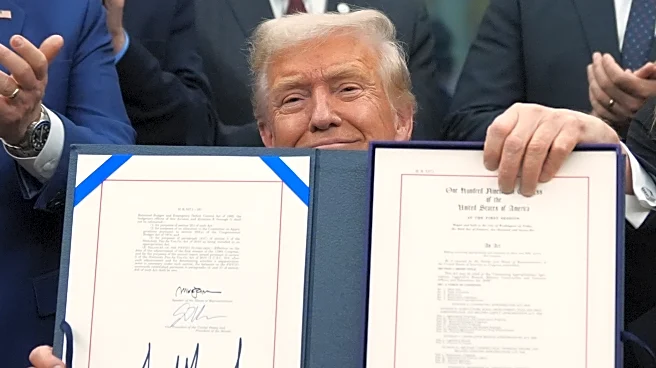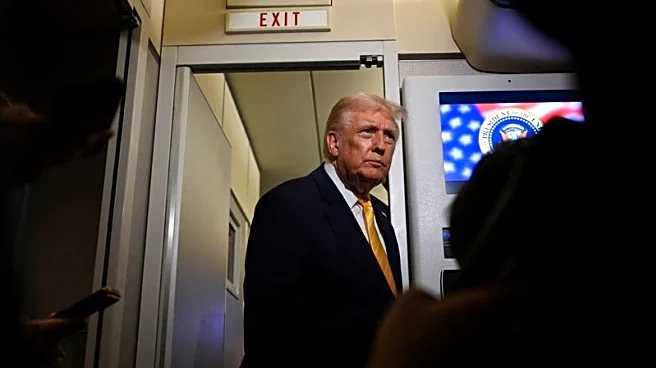What's Happening?
A recent government shutdown has highlighted the inherent power struggle between the U.S. Senate and House of Representatives, as intended by the nation's founders. The shutdown ended when eight Senate Democrats joined the GOP majority to pass a resolution,
despite the deal not meeting the Democratic Party's goal of extending Affordable Care Act premium subsidies. These subsidies are crucial for millions of Americans who rely on them to afford health care coverage through Obamacare exchanges. The resolution included a promise for a future Senate vote on the subsidies, but its success remains uncertain. This situation has caused a rift within the Democratic Party, reminiscent of past conflicts between the two legislative bodies.
Why It's Important?
The resolution of the shutdown without extending health care subsidies could lead to increased costs for millions of Americans, affecting public trust in the Democratic Party's ability to manage health care issues. The situation underscores the complex dynamics between the Senate and House, which can impact legislative outcomes and party strategies. The Democratic Party's handling of this issue may influence voter sentiment in the upcoming 2026 midterm elections, where health care is expected to be a significant topic. The shutdown also demonstrated the Senate's leverage over the House, emphasizing the founders' design for a slow and deliberate legislative process.
What's Next?
The Senate is expected to hold a vote on the health care subsidies in December, but it is unclear if the measure will receive the necessary 60 votes or be considered by the House. The Democratic Party may use the health care issue to rally support in the 2026 midterm elections, leveraging public trust in their health care policies. Meanwhile, President Trump is pressuring Senate Republicans to eliminate the filibuster, which could lead to significant legislative changes, including voter suppression laws and a nationwide abortion ban. The Democratic minority's ability to use the filibuster to block such initiatives remains a critical concern.
Beyond the Headlines
The shutdown resolution reflects deeper constitutional principles, where the rivalry between the legislative bodies and the executive branch is designed to ensure a balanced and cautious approach to national policymaking. The founders intended for the legislative process to be cumbersome, preventing hasty decisions and fostering broad consensus. This historical context continues to shape modern political strategies and legislative outcomes, influencing how parties navigate conflicts and negotiate compromises.















